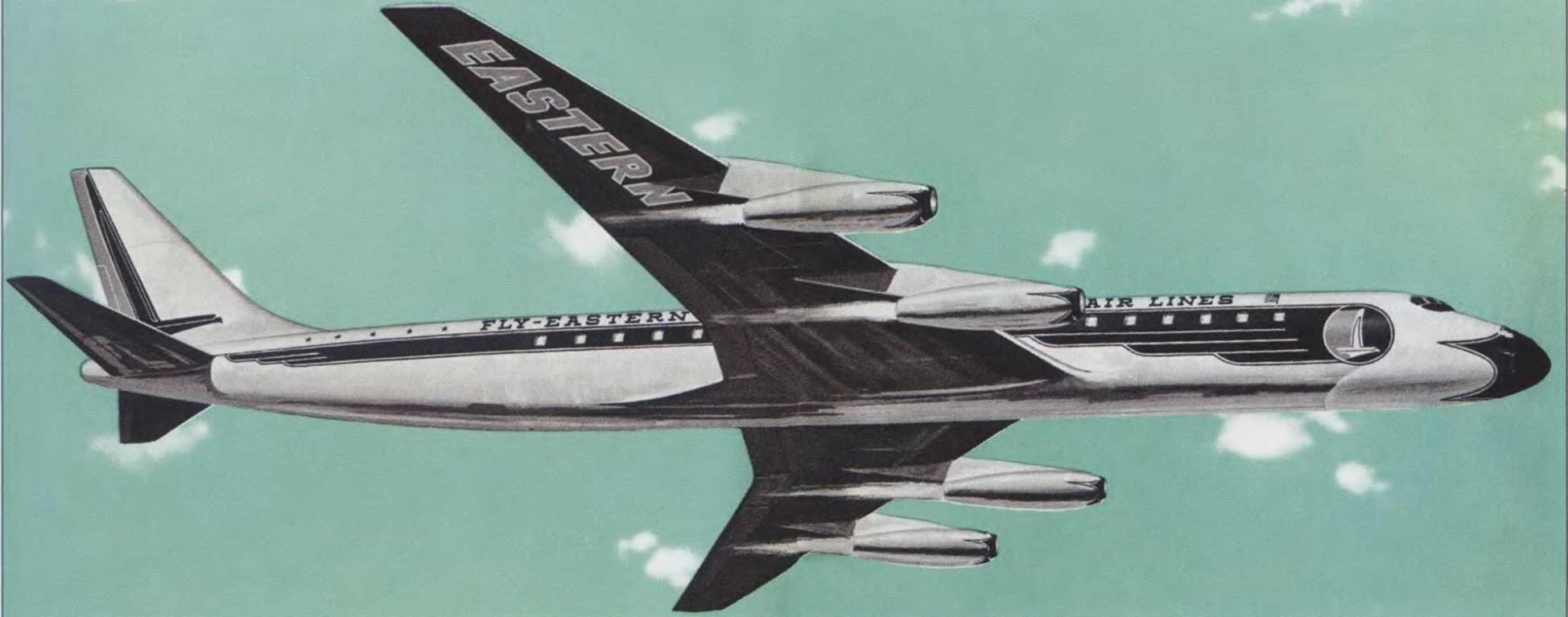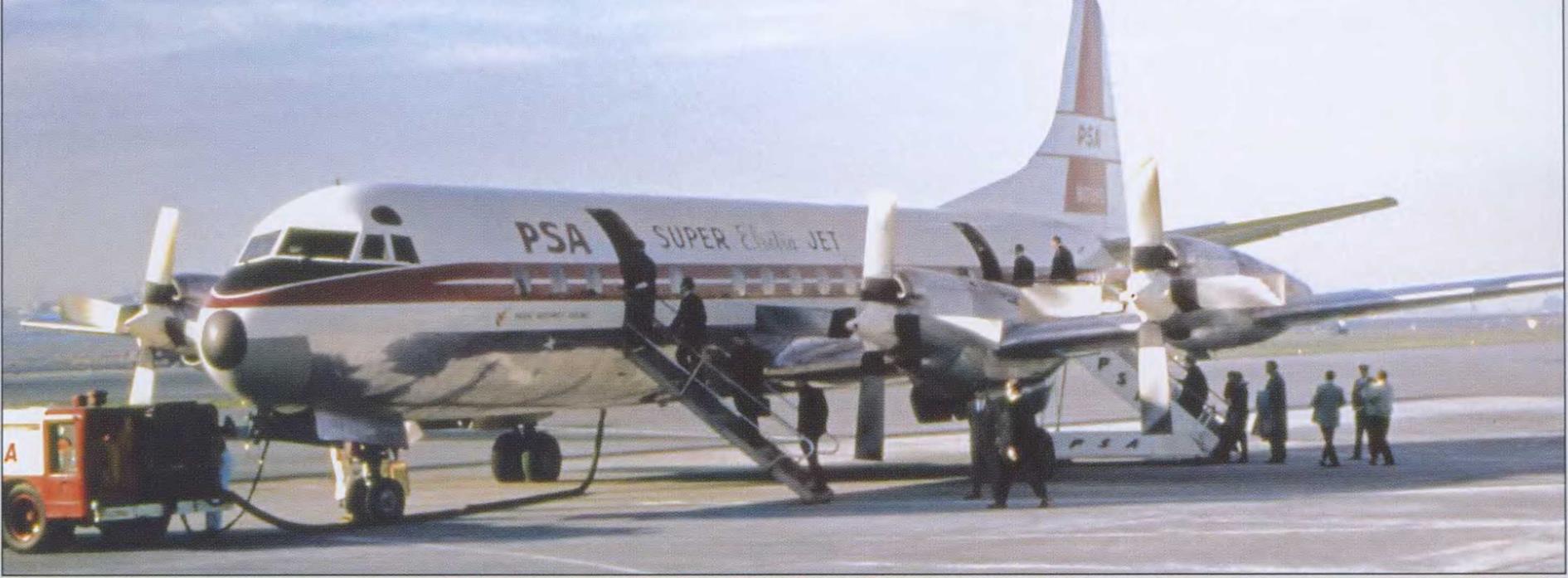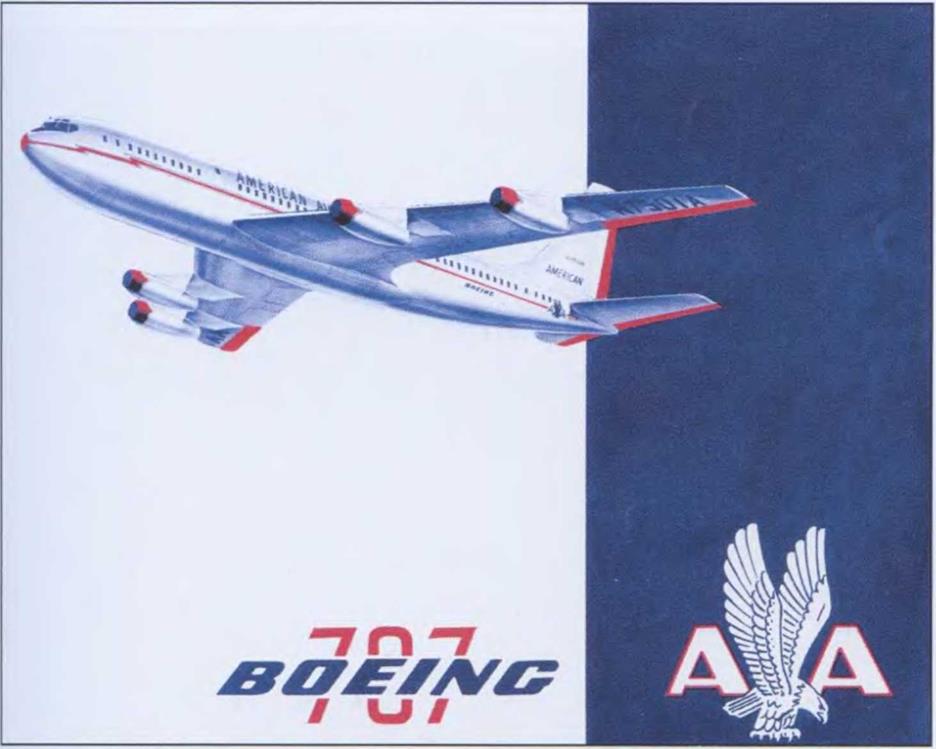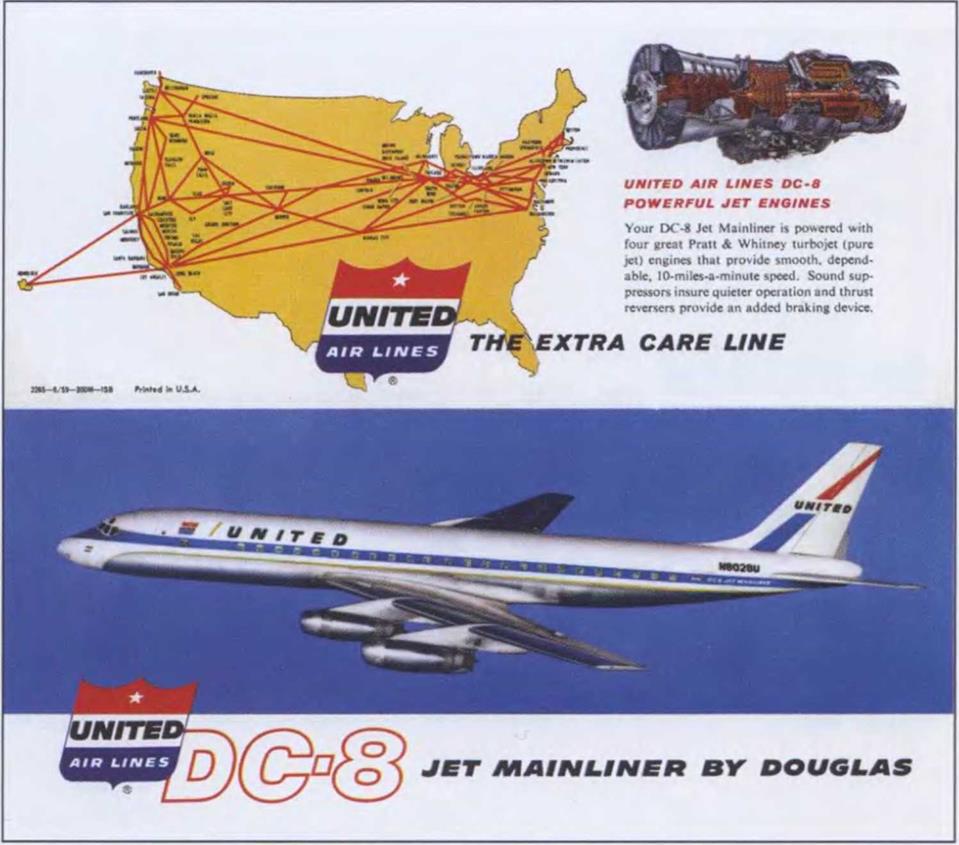WELCOME ABOARD THE ELECTRA
|
By Jon Proctor
|
M |
ost first-time travelers aboard the Electra were, like the airlines, transitioning from aircraft such as the DC-6 and Constellation plus, to an extent, Convair and Martin twins. With the Electra’s self – contained boarding stairs forward of the wing, one had a chance to get up close and personal with the airplane before even stepping aboard. Compared to the older piston-powered airliners, the Electra looked big, in part because it sat higher off the ground. Its larger passenger windows and fatter fuselage were noticeable, but what really impressed me upon stepping toward the air stairs were the engines and absolutely huge propellers, which reeked of power even while resting at the gate.
Stepping into the airplane, I was impressed with the softer, indirect lighting and a cabin design that gave it a roomy appearance. Soft background music added to the contrast between old and new. Designed for short – to medium-haul routes, most Electras featured carry-on luggage compartments near the forward door. It was almost like boarding a Convair-Liner, yet as I looked aft, the rear lounge mimicked a DC-6 or DC-7, as did the galley adjacent to the second door behind the wings, where I was used to boarding a Douglas.
My first Electra flight was on Pacific Southwest Airlines (PSA), from San Diego to Los Angeles in December 1959, only two months after the type entered service along the California coast. Even in its
98-seat, all-coach layout, it felt roomy, probably enhanced by the six-seat lounge one would not expect to see when riding on a $5.45 ticket.
I chose to sit in the last row of the forward cabin, just ahead of the prop line, so I could see those mighty Allisons fire up. From my window seat, I watched as the props blended into what looked like two giant saucers. Expecting a higher noise level as we pulled away from the gate, I was surprised to feel the brakes release and no increase in propeller rotation, only a slight engine-pitch adjustment. Welcome to the world of constant-speed propellers.
After a short taxi to Runway 27, and no pause to run up engines, the propeller pitch changed again and I was pushed back into my seat as the Electra accelerated rapidly. Unlike the longer takeoff roll I was used to, this bird literally jumped into the air and climbed through the marine cloud layer at a steep angle, bursting into bright sunlight.
PSA kept the cockpit door open in flight (those were the days!), with a red cloth rope across the opening, giving passengers a peek at the front office. Although the flight engineers seat partially blocked the view, one could see the wide work area that required separate throttle quadrants for the captain and co-pilot.
Although this first flight was smooth, I later found that the Electra s relatively stiff, stubby wings made it more susceptible to turbulence. Its cabin noise level close to the engines was higher, much like the propliners it replaced, but even attached to the
propeller, the turboprop engines featured much lower vibration levels, adding to overall passenger comfort.
My PSA flight touched down at Los Angeles International barely 20 minutes after liftoff from San Diego. A propeller-pitch change brought the Electra
to a quick stop on the runway, followed by a short taxi to the terminal on Avion Drive. The use of both doors allowed a less-than-10-minute turnaround, yet another Electra feature that made it attractive to airlines, and an ideal fit for PSA.

Here is another example of a prop-era color scheme being applied to a new jetliner still years away from rolling out through the factory doors. Eastern’s classic "meatball" scheme, as it was popularly referred to, is applied to a DC-8 in this artist’s rendering, and doesn’t look all that bad. The large underwing lettering might not have been very effective when the jet was cruising at 35,000 feet. (Mike Machat Collection)
|
|
Factory brochure prepared for customer airlines by Boeing details the technical aspects of the new 707, although the jet’s final color scheme had not yet been defined. Here we see a DC-7-style paint job as it would have looked on the 707, but American’s first airplane was still several years away from reality when this booklet was prepared. It is interesting to note that American was the only U. S. airline to have the engine nacelles painted to match the fuselage markings. (Craig Kodera Collection)
|
|
Another clean and classic Raymond Loewy color scheme was developed for application to United’s new Douglas DC-8s and Boeing 720s. Nicely complementing American’s bare-metal-with-orange-striping motif and TWA’s striking red arrowhead design, the red, white, and blue of United’s new look was worn on its vast fleet of jets all the way into the mid-1970s. (Mike Machat Collection)














